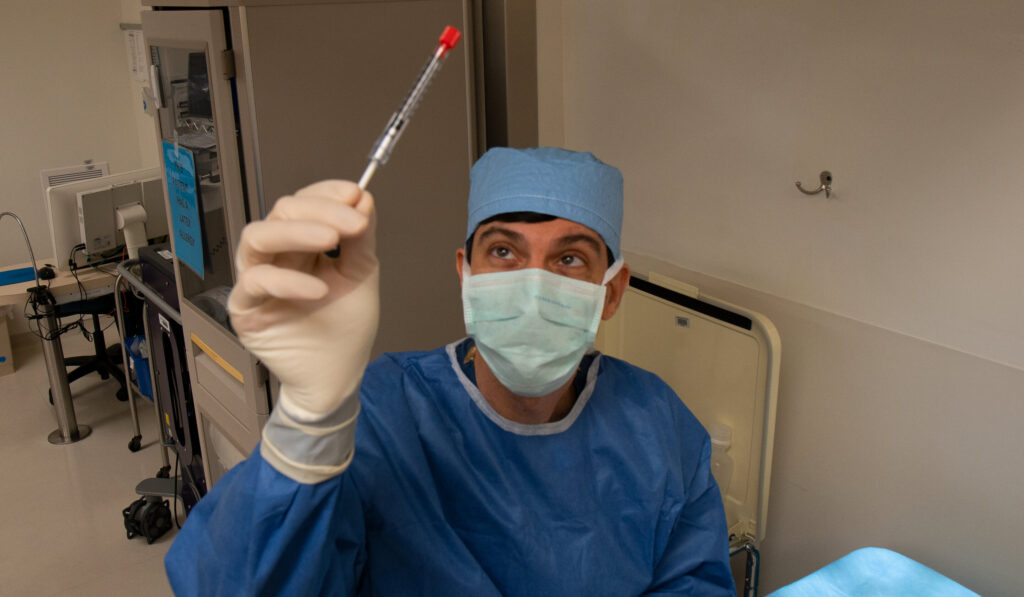A groundbreaking multi-institutional clinical trial involving researchers from Children’s Hospital of Philadelphia (CHOP) and the Scheie Eye Institute at the University of Pennsylvania recently found that CRISPR-Cas9 gene editing delivered to fourteen individuals with a form of inherited blindness was safe and led to measurable improvements in vision in nearly half of the participants treated, including two children treated at CHOP. The promising findings were published in the prestigious New England Journal of Medicine. In this article we talk about How were two patients at CHOP successfully treated for inherited blindness using gene editing.
Investigating the Impact of Gene Mutations in LCA: Insights from the BRILLIANCE Clinical Trial
The phase 1/2 BRILLIANCE clinical trial included 12 adults and two children who were born with Leber Congenital Amaurosis (LCA), a severe form of inherited retinal degeneration caused by mutations in the CEP290 gene. Mutations in the CEP290 gene are the leading cause of inherited blindness that occurs during the first year of life. The mutations cause rod and cone photoreceptors in the retina to malfunction and eventually lead to irreversible vision loss and potentially complete blindness.
The trial participants underwent a single injection of a pioneering CRISPR/Cas9 gene editing therapy, EDIT-101 (manufactured by Editas Medicine, Inc.) into one eye via a specialized surgical procedure. This first-of-its-kind trial delivered an experimental CRISPR-based medicine directly to the retina, focusing primarily on safety with a secondary analysis of efficacy. Patients were closely monitored every three months for at least six months post-treatment, with ongoing follow-ups.
Excitingly, the study found no concerning treatment-related adverse events or dose-limiting toxicities. For efficacy, the researchers analyzed four key measures: best-corrected visual acuity (BCVA); dark-adapted full-field stimulus testing (FST) to assess rod and cone function; a visual navigation course (VNC maze) to evaluate functional vision; and vision-related quality of life reported by patients.
Remarkably, 11 out of 14 participants demonstrated improvements in at least one of those vision outcomes, while six showed gains in two or more measures. Most notably, six patients achieved meaningful improvements in cone-mediated vision critical for daytime and color vision, as shown by FSTs. Five of those patients also experienced enhancements in at least one other vision parameter.
“Our patients represent the first congenitally blind children to ever be treated with gene editing, which significantly improved their daytime vision,” said Dr. Tomas S. Aleman, Director of the Retina Gene Therapy Program at CHOP and Penn. “We hope this pioneering trial paves the road for treating younger children with similar retinal diseases, achieving even greater vision gains. It represents a new era in effectively and safely treating genetic blindness, particularly when traditional gene augmentation therapy isn’t feasible.”
Pioneering Gene Editing in LCA Treatment: Unveiling the BRILLIANCE Clinical Trial Approach
The groundbreaking gene editing approach acts by eliminating the genetic mutation rather than attempting to replace the flawed gene as traditional gene therapies do. The editing reactivates the silenced CEP290 gene, allowing it to produce normal protein that rescues photoreceptor and vision function. While other trials have used CRISPR editing in blood cells, this first-in-human trial delivered the editor directly to retinal tissue.
The research was primarily funded by Editas Medicine, the biotechnology company that manufactured the CRISPR-based medication EDIT-101. Further support came from the National Institutes of Health, the Mackall Foundation Trust, and Research to Prevent Blindness.
Shaping the Future of LCA Treatment: Insights from the BRILLIANCE Clinical Trial Results
The successful safety and efficacy results from this landmark Phase 1/2 clinical trial will inform the design of future phases evaluating the optimal dose and timing of treatment for inherited retinal diseases. Researchers also aim to initiate trials delivering the medication to children as young as three years old to maximize potential vision gains during critical periods of visual development.
Ongoing and future research will focus on optimizing the surgical delivery approach as well as editing efficiency. Scientists also hope to expand trials for other gene mutations causing Leber Congenital Amaurosis, additional inherited retinal dystrophies, and dry age-related macular degeneration. With further refinements, CRISPR-based gene editing could revolutionize treatment for these blinding conditions, providing hope to the millions affected globally. I sincerely hope you like reading this “How were two patients at CHOP successfully treated for inherited blindness using gene editing?” article.






